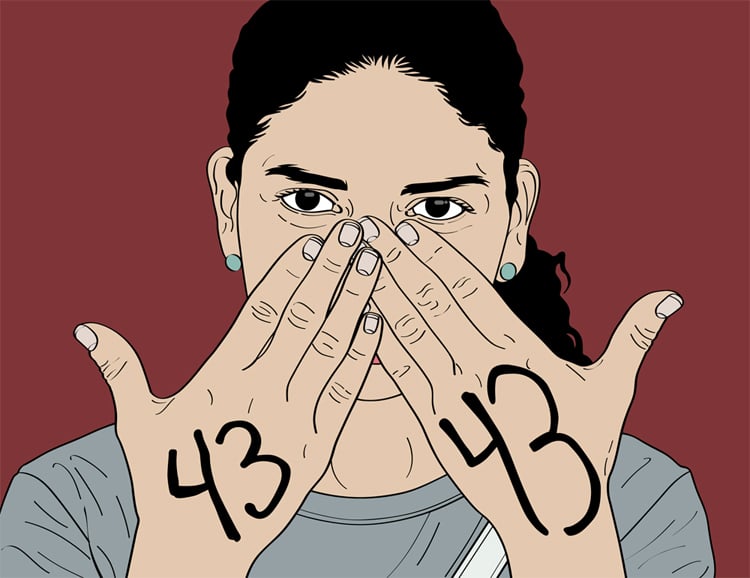
Protester in Ayotzinapa
photo: via latimes.com
Protesters all over Mexico have been creating masks, murals, and banners to mark the unexplained disappearance of 43 students last year, the L.A. Times‘s Carolina Miranda reports.
Over a year ago, 43 students disappeared from the Mexican Town of Ayotzinapa. After months of protests, 90 arrests, and no official charges there are finally some answers, albeit inconclusive, as to what happened.
In the year that has passed, the students—41 of whom are still unaccounted for—have become a symbol of the strife of Mexican citizens in the face of the current situation between the government and the cartels in Mexico.
On the anniversary of the disappearance of the 43, many people took to the streets and also voiced their anger through street art, posters, and their take on traditional Mexican masks.
Protestors have created murals with the faces of the 43, ensuring that the human faces of the tragedy will not be forgotten. They are also using traditional indigenous protest iconography from Ayotzinapa to serve as a reminder of what took place.
The use of the silhouetted masks, worn by every protestor at a large protest in Mexico City last month sent a powerful message to the authorities who are yet to provide families with the due process which would give them information about what happened to their loved ones.
The families believe that members of the military hold the key to the events that led to the deaths of the students, but they are yet to be questioned by the authorities.
From the use of the traditional Day of the Dead masks to folk art style, portraits of the missing students protestors won’t let the Mexican authorities forget about the 43 and the need for answers about their disappearance. Earlier this year, artist Édgar Olguín responded to the mass kidnapping and presumed killing of 43 students in the Mexican state of Guerrero with a powerful photographic series.
Greenpeace boat Esperanza also illuminated the numbers 43 to mark the anniversary as it sailed through Guerrero, the region from which the students disappeared.
The persistence of the protesters are thought to be causing serious problems for the Mexican government, raising questions about the relationship between the government and the cartels and their reign of violence in the country.